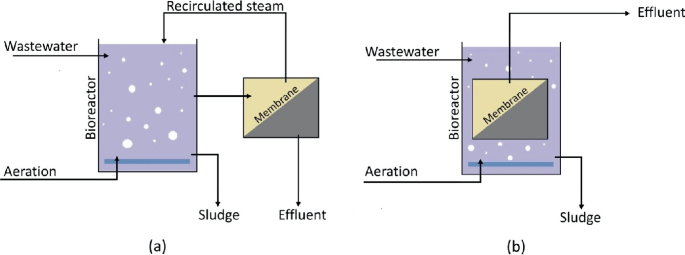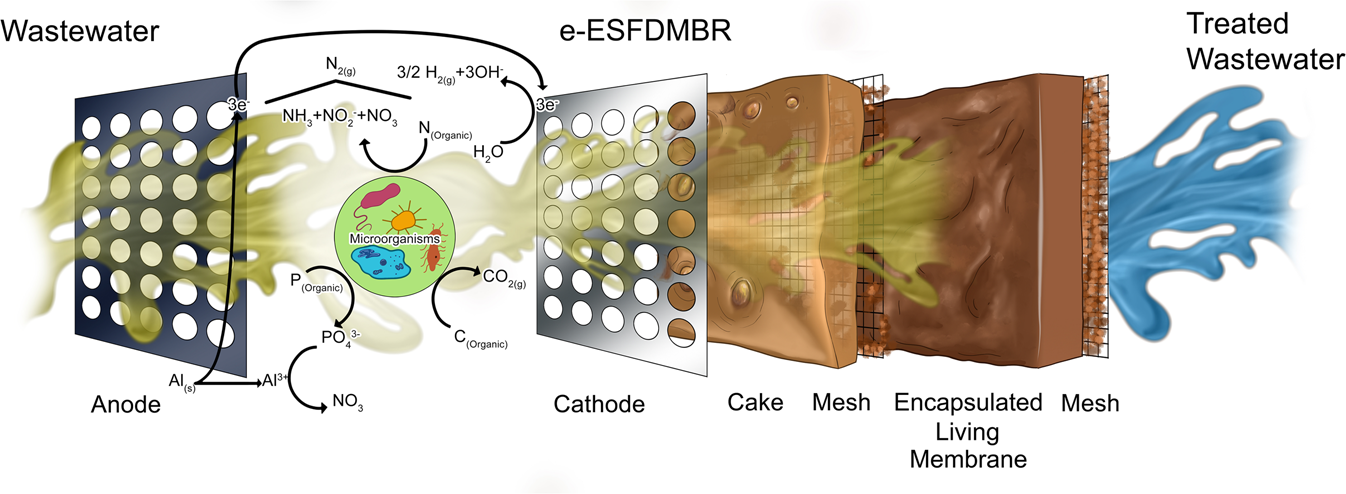How Membrane Bioreactor Can Help Meet Stringent Environmental Regulations
Wiki Article
Recognizing Membrane Layer Bioreactors: The Future of Wastewater Treatment
Membrane layer bioreactors (MBRs) represent a notable innovation in the field of wastewater therapy, incorporating organic processes with sophisticated membrane layer filtration to improve effluent top quality. As worldwide water scarcity and rigid governing frameworks end up being significantly pushing issues, MBR innovation supplies an effective reaction with its capability to minimize footprint and enhance source recuperation.What Are Membrane Layer Bioreactors?

The core elements of MBR systems include a bioreactor where microbial activity happens and a membrane layer system that filters the blended liquor. This double performance allows the synchronised deterioration of natural issue and solid-liquid separation in a single step. MBRs can operate in both immersed and exterior arrangements, with immersed systems being a lot more usual because of their small style and operational effectiveness.
The adoption of MBR technology has actually gotten grip in different applications, ranging from community wastewater treatment to commercial effluent monitoring. MBRs are especially helpful in situations where space is rigid or restricted effluent quality criteria have to be satisfied. By preserving a high concentration of microbes within the bioreactor, MBRs boost the deterioration of organic contaminants, thus yielding greater treatment efficiencies contrasted to standard methods.
Trick Benefits of MBR Technology
The combination of organic therapy with membrane purification in MBR systems uses numerous benefits that establish it besides traditional wastewater therapy approaches. One of the key benefits is the improved effluent quality. MBRs successfully get rid of suspended solids and virus, accomplishing greater levels of filtration that fulfill stringent discharge criteria and facilitate water reuse applications.
Another considerable benefit is the lowered sludge manufacturing. MBR systems generate less excess sludge, causing reduced disposal prices and a reduction in ecological influence. The shut nature of the membrane layer system minimizes the risk of odor discharges and boosts general procedure control.
Last But Not Least, MBRs are versatile and functional, making them ideal for numerous wastewater kinds, consisting of commercial and municipal sources. The ability to integrate with advanced treatment technologies even more improves their efficiency, making MBRs an appealing option for the future of wastewater administration.
Difficulties and Limitations of MBRs
While MBR innovation provides various advantages, it also faces several obstacles and constraints that can influence its extensive adoption. One considerable challenge is the high capital and functional prices connected with MBR systems. The preliminary investment for membrane products and the needed facilities can be substantial, making it much less obtainable for smaller sized towns or industries.Furthermore, membrane fouling continues to be an essential concern that can decrease system performance and rise maintenance demands. Fouling occurs when solids, raw material, or bacteria build up on the membrane layer surface area, resulting in lowered leaks in the structure and requiring constant cleaning or substitute.
One more limitation includes the complexity of the innovation. MBR systems call for competent personnel for procedure and maintenance, which can be an obstacle in regions with restricted technical experience. The disposal of invested membranes provides ecological concerns, as the materials are usually not naturally degradable and can add to waste administration obstacles.
Lastly, while MBRs can successfully deal with a variety of wastewater, they might not be suitable for all applications, especially those with high focus of fats, oils, and oils, necessitating additional research study and technology to deal with these restrictions.
Applications of Membrane Layer Bioreactors
In numerous fields, membrane bioreactors (MBRs) have arised as a functional remedy for wastewater treatment (Membrane Bioreactor). Their applications span community, commercial, and farming setups, showcasing their flexibility and effectiveness in diverse environments. In community wastewater treatment plants, MBRs significantly improve effluent high quality, enabling water reuse and lowering the ecological influence of released wastewaterIndustrially, MBRs are used in food and drink handling, fabric production, and pharmaceutical manufacturing, where they properly deal with high-strength waste streams. Their capacity to take care of varying and varying loads contaminant concentrations makes them particularly valuable in these sectors. Additionally, MBRs visit site promote the elimination of virus, put on hold solids, and raw material, adding to conformity with rigid discharge guidelines.
In agriculture, MBRs are progressively used for dealing with farming overflow and livestock wastewater, enabling the recuperation of nutrients for plant food production. They also help in the therapy of greywater for irrigation, advertising lasting water administration practices.
The versatility of MBRs is more confirmed by their integration with various other innovations, such as anaerobic digestion and progressed oxidation procedures, enhancing total performance and resource recuperation in wastewater treatment systems.
The Future of Wastewater Therapy
Improvements in technology and an expanding emphasis on sustainability are forming the future of wastewater treatment. Membrane bioreactors (MBRs) exhibit this shift by incorporating biological therapy processes with membrane layer filtration, causing top notch effluent appropriate for reuse. The trend this website in the direction of circular economies is triggering facilities to embrace MBRs for their ability to recuperate resources, such as water and nutrients, from wastewater.Advancements in membrane materials and arrangement are improving the performance and longevity of MBR systems, minimizing functional expenses and power consumption. Smart modern technology integration, consisting of real-time surveillance and automated control systems, is additional maximizing performance and allowing anticipating maintenance, therefore decreasing downtime.
Moreover, social assumptions and regulatory pressures are pressing sectors and districts to adopt more lasting techniques. Membrane Bioreactor. The shift towards decentralized wastewater treatment options is obtaining grip, permitting localized treatment that minimizes transport prices and energy use
Conclusion
Membrane bioreactors (MBRs) stand for a transformative technique to wastewater therapy, incorporating organic processes with advanced membrane layer technology. The advantages of MBRs, including improved effluent high quality, minimized spatial needs, and reduced sludge manufacturing, place them as a feasible remedy in the middle of expanding urbanization and more see page stringent ecological laws. Regardless of existing challenges, the ongoing advancement in membrane layer products and operational techniques guarantees to reinforce the effectiveness and adoption of MBRs, ensuring their pivotal role in the future of lasting wastewater monitoring.Membrane layer bioreactors (MBRs) represent a noteworthy development in the field of wastewater treatment, incorporating organic processes with sophisticated membrane filtration to boost effluent top quality.Membrane layer bioreactors (MBRs) integrate biological treatment procedures with membrane filtration to efficiently treat wastewater.The combination of organic therapy with membrane filtration in MBR systems offers countless benefits that set it apart from traditional wastewater therapy techniques. Membrane bioreactors (MBRs) exhibit this shift by incorporating biological treatment processes with membrane layer filtering, resulting in top quality effluent suitable for reuse.Membrane layer bioreactors (MBRs) represent a transformative strategy to wastewater treatment, integrating organic processes with innovative membrane modern technology.
Report this wiki page